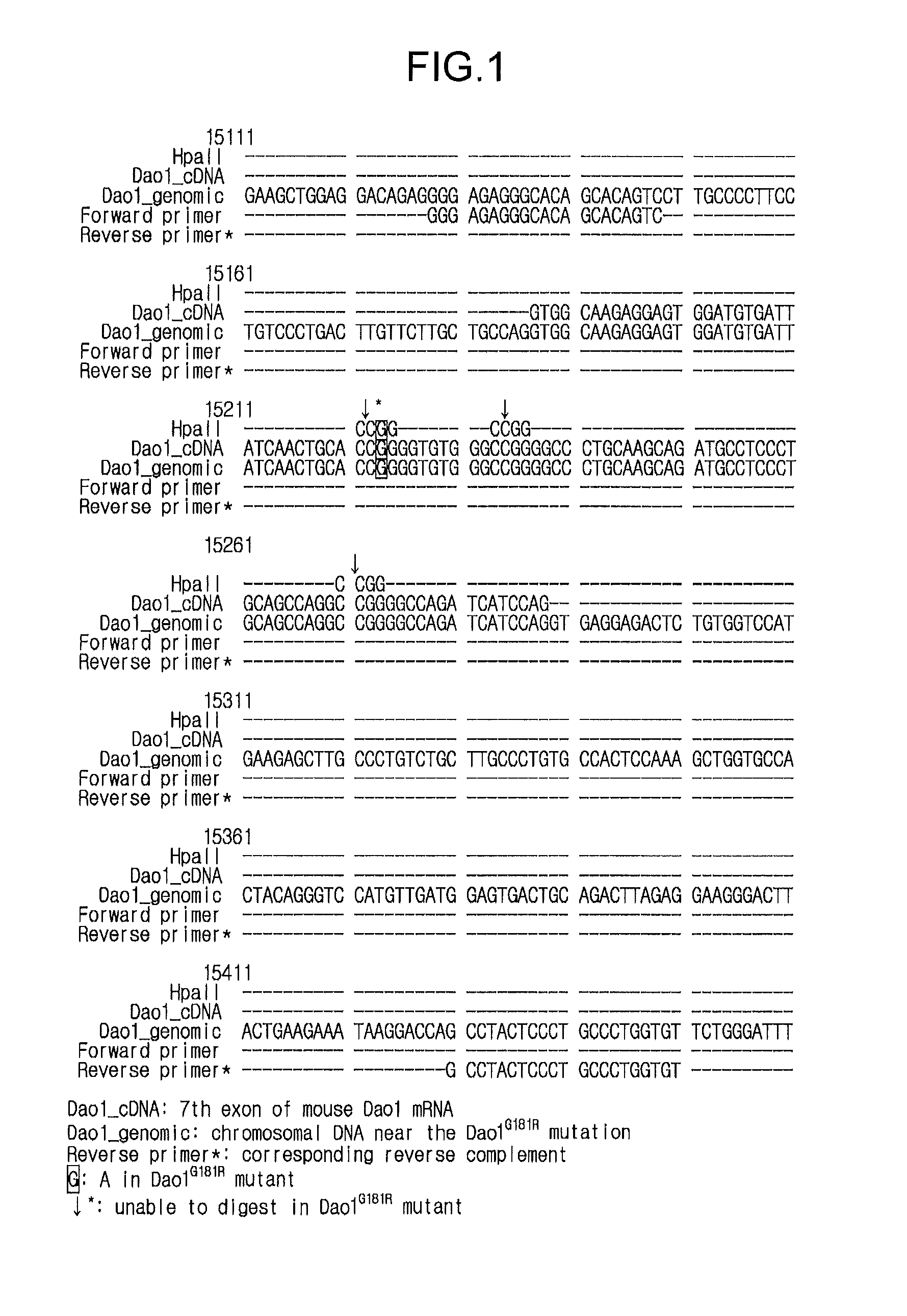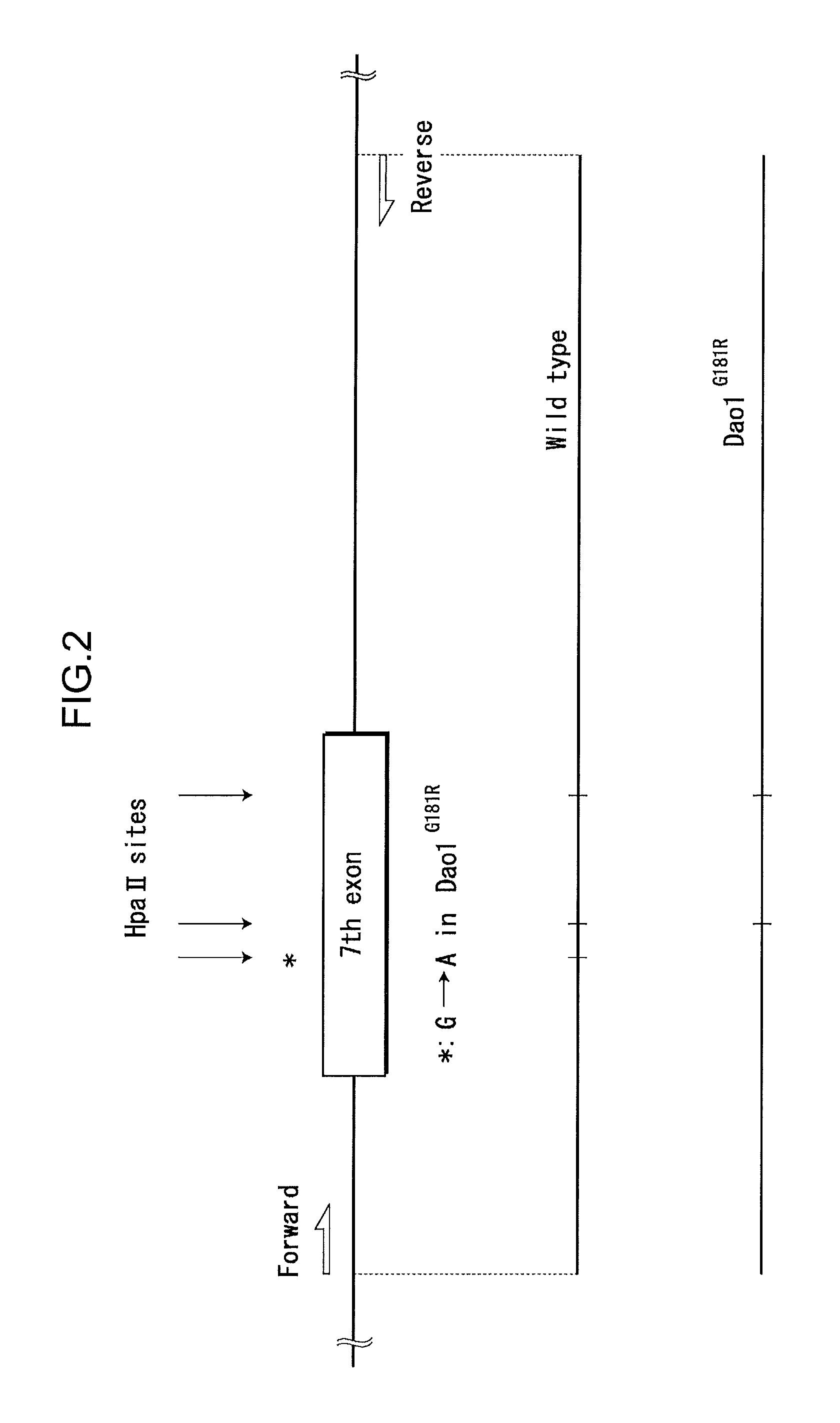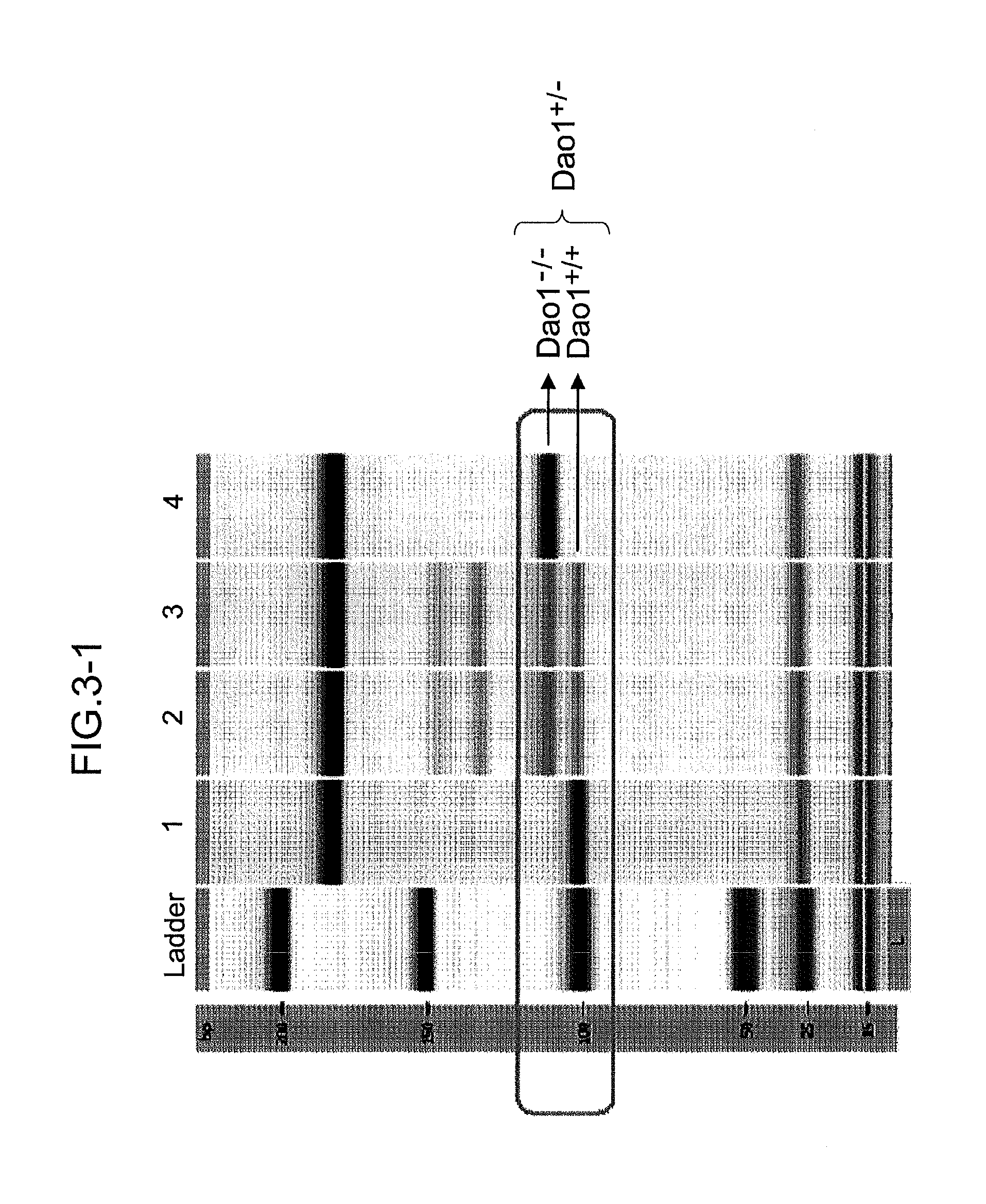Evaluation/screening method for diseases associated with D-amino acid utilizing DAO1-/-mouse
a damino acid and screening method technology, applied in the field of damino acid screening method, can solve the problem of rapid degradation of d-amino acids, and achieve the effect of suppressing cancers and/or cell proliferation and/or enhancing and/or suppressing cancers
- Summary
- Abstract
- Description
- Claims
- Application Information
AI Technical Summary
Benefits of technology
Problems solved by technology
Method used
Image
Examples
embodiment 1
[Embodiment 1]
Development of a Method for Determining the Dao1+ / +, + / −, and / or − / − Genotypes
[0059]Dao1G181R is a mutant in which, of the cDNA nucleotide sequence of the Dao1 gene recited as sequence identification number 3, the guanine of number 661 is substituted by adenine. As a result, in contrast to the wild type, in which the cleavage sequence of the restriction enzyme HpaII becomes (C↓CGG), it becomes CCAG in the Dao1G181R mutant and is not cleaved. Here, since the nucleotide numbers 625-726, which includes the site of mutation, includes the 7th exon (GenBank entry number NM—010018.2), it is possible to discriminate between a wild type and a mutant even with chromosomal DNA, according to the presence or absence of the HpaII cleavage site.
[0060]Following individual identification of postweaned mice, chromosomal DNA was extracted from the tail of each individual mouse and purified using a commercial mammalian genome DNA mini-prep kit (Sigma, G1N70-1 KT). An oligonucleotide consi...
embodiment 2
[Embodiment 2]
Development of a Method for Quantitative Analysis of the Optical Isomers of Proline and 4-Hydroxyproline
[0064]Proline and 4-hydroxyproline are high in content in skin collagen. Therefore, a method that can simultaneously separate and quantitatively analyze all of the optical isomers of both proline and 4-hydroxyproline was developed.
[0065]FIG. 4-1 shows the optical isomers of proline and 4-hydroxyproline. Although there are just 2 types of optical isomers, the L-type or D-type, for proline, in regard to the optical isomers of 4-hydroxyproline, there are 4 types as a result of the difference in the trans-type and the cis-type in addition to the difference in the L-type or the D-type. Firstly, fluorescence labeling was performed by derivatizing the amino acid with a fluorescence reagent NBD-F. Thereafter, as shown in FIG. 4-2, reverse phase separation chromatography was performed in a first column, and the respective peaks for trans-4-hydroxyproline, cis-4-hydroxyproline...
embodiment 3
[Embodiment 3]
Tumor Growth in Dao1 Enzyme Deficient Mouse
[0069]Sarcoma cells of the Swiss Webster Sarcoma 180 line were cultured using a 10% fetal bovine serum (Irvine Scientific, Lot #300A80601) added DMEM (Sigma) medium under humidified conditions with 5% CO2 at 37° C. A suspension of 1×107 cells / mL was prepared, and 0.05 mL each of the footpad of the right hind leg of a Dao1 enzyme deficient mouse or a wild type mouse were transplanted by endermic injection. The major axis, minor axis, and thickness of the tumor was measured with a caliper every week following the transplant, and the tumor volume was calculated by the formula below.
Tumor volume (mm3)=major axis (mm)×minor axis (mm)×(thickness (mm)−3)
[0070]Here, in regard to the thickness, the original thickness of the foot was made 3 mm, and the difference thereof was made the thickness of the tumor.
[0071]The result is shown in FIG. 8. FIG. 8 is a bar graph comparing the change in the tumor volume for a Dao1 enzyme deficient mous...
PUM
| Property | Measurement | Unit |
|---|---|---|
| pH | aaaaa | aaaaa |
| thickness | aaaaa | aaaaa |
| volume | aaaaa | aaaaa |
Abstract
Description
Claims
Application Information
 Login to View More
Login to View More - R&D
- Intellectual Property
- Life Sciences
- Materials
- Tech Scout
- Unparalleled Data Quality
- Higher Quality Content
- 60% Fewer Hallucinations
Browse by: Latest US Patents, China's latest patents, Technical Efficacy Thesaurus, Application Domain, Technology Topic, Popular Technical Reports.
© 2025 PatSnap. All rights reserved.Legal|Privacy policy|Modern Slavery Act Transparency Statement|Sitemap|About US| Contact US: help@patsnap.com



